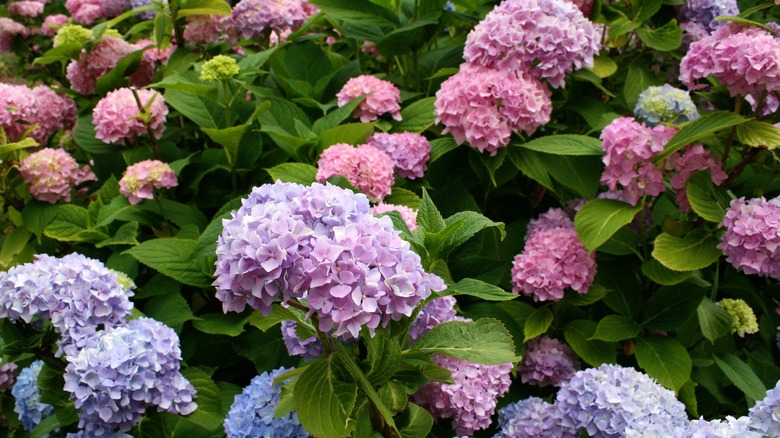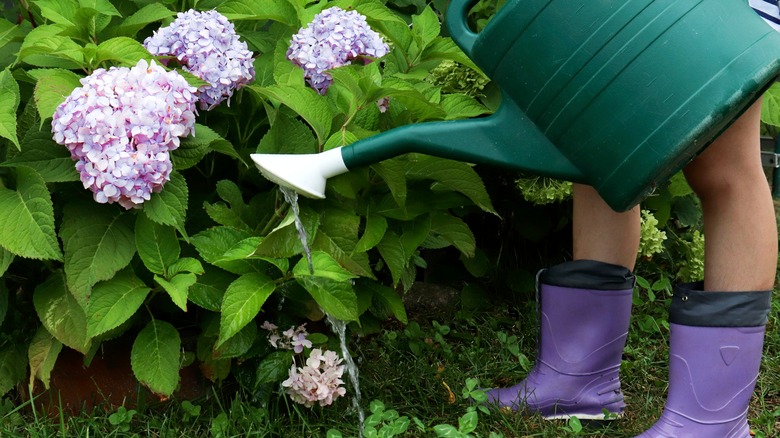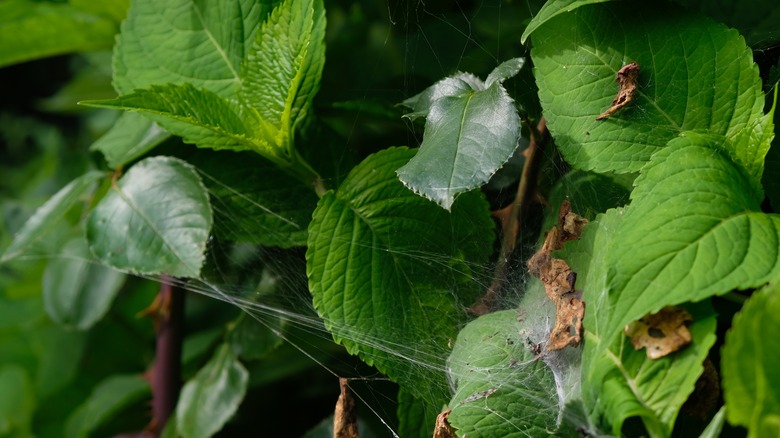How To Take Care Of Your Beloved Hydrangeas In Summer Heat
Hydrangeas can have a tougher time getting through dry, hot days. Though hydrangeas initially thrive in warmer weather, where they can receive sunlight in the early morning and evening shade,too much sun can dry them out, so they need a nice balance. Some varieties of hydrangeas can tolerate hotter weather than others, such as the oakleaf hydrangeas. However, all hydrangeas need lots of water to survive the summer heat. Their roots can dry out, causing their petals to turn brown without enough water in their soil.
In addition, without proper hydration, hydrangeas are exposed to pests who love claiming their territory on their leaves and stems. It'll be more challenging to keep insects and disease away from your hydrangeas if they're heat-stressed. Yet, once you figure out once you learn the best watering practices in the midst of intense summer heat, along with insect prevention tactics, you can keep your hydrangeas safe from the summer heat.
Create a new watering schedule
Water can profoundly affect your plant's growth and survival. Hydrangeas require at least an inch of water weekly to maintain their lush petals and strong roots. Watering hydrangeas in the morning when the sun is out is ideal to prevent their roots from drying out by midday. But during scorching summer weather, an inch of water a week may not be enough to keep them afloat. Use a soaker hose to deeply water the hydrangeas' soil during a heat wave. You can water them before the hotter days arrive or leave the soaker hose on the soil during higher temperatures. But make sure you're solely watering their soil and never their leaves, as they're prone to fungal diseases.
If you notice your flowers wilting or turning brown, water them immediately to ensure they're hydrated. They'll be able to rebloom and regrow in the same summer if they're taken care of right away. Leaving them too long without care will push back their blooming period to the following summer. Another excellent way to ensure your hydrangeas' soil and roots stay moist is by adding a layer of mulch to the soil's surface, which will help to trap the moisture inside.
Keep pests out
When hydrangeas become dehydrated, they can become weak and vulnerable, which opens a door for insects to invade them. Japanese beetles and spider mites are a couple of common pests that enjoy feeding upon and ruining hydrangeas when they're heat-stressed. Japanese beetles can feed upon and eventually skeletonize the foliage of hydrangeas. They can be removed by hand, or with traps or insecticide. Spider mites are menaces and are known for creating webs all over hydrangeas when they're beginning to dry out. They'll spread their webs over every flower in the bunch. It may be essential to hose your hydrangeas down when you see spider mites on them — spray your plants with a garden hose until the spider mites and their webs disappear. As you can see, it's vital to keep your hydrangeas' roots and soil deeply watered and hydrated in order to prevent unnecessary heat stress, thus helping to prevent damaging insects.


